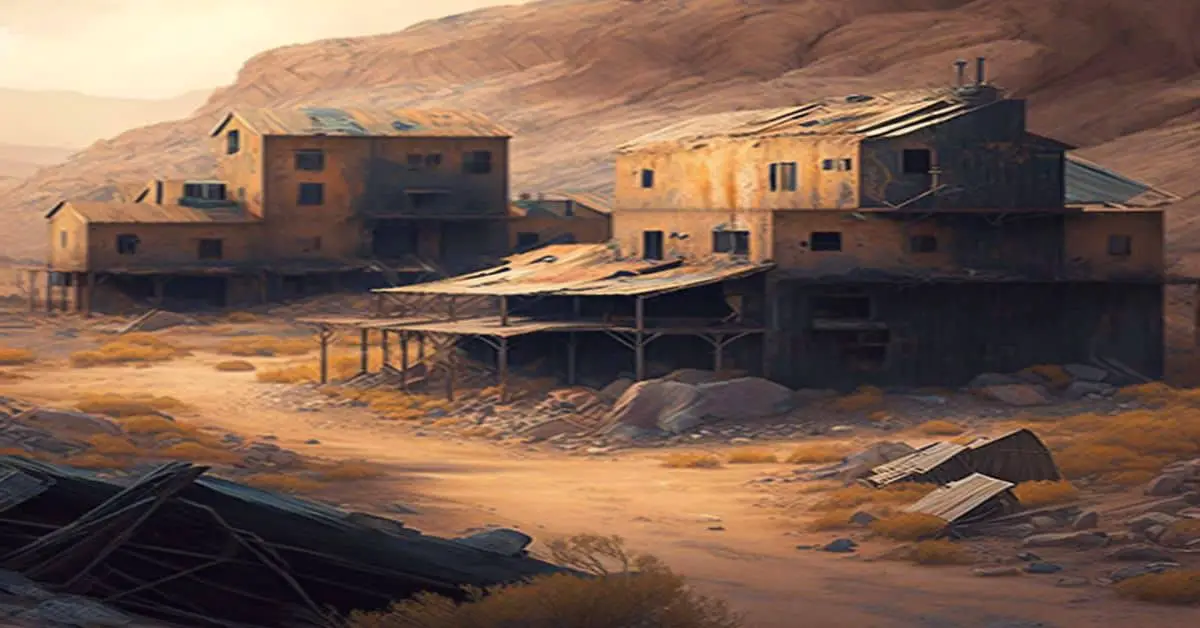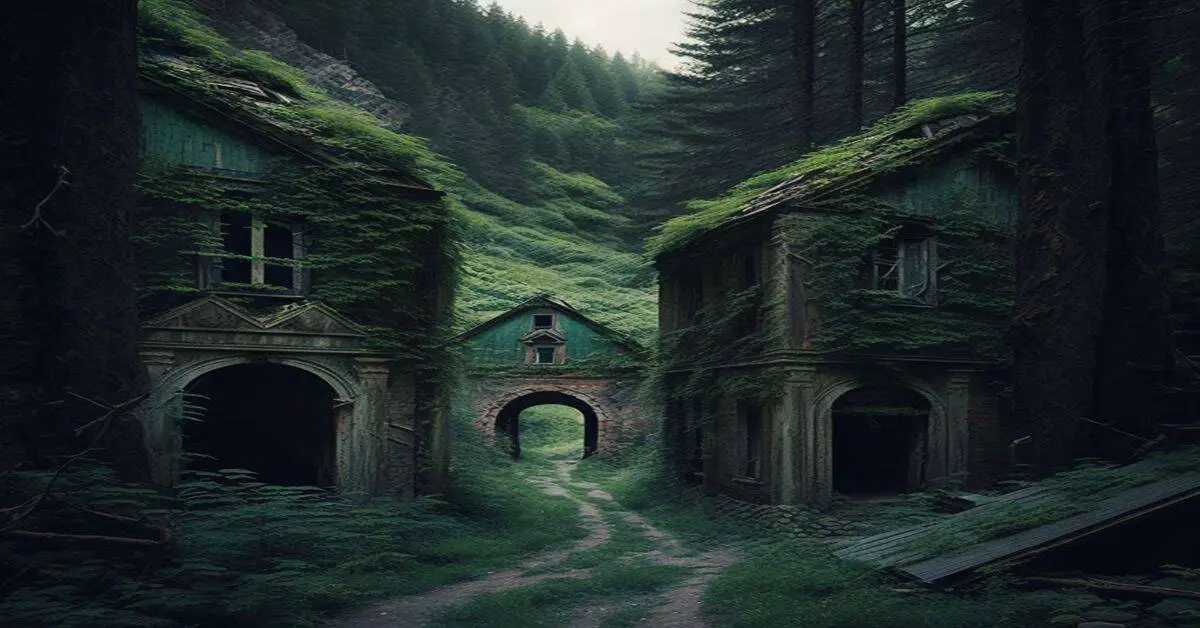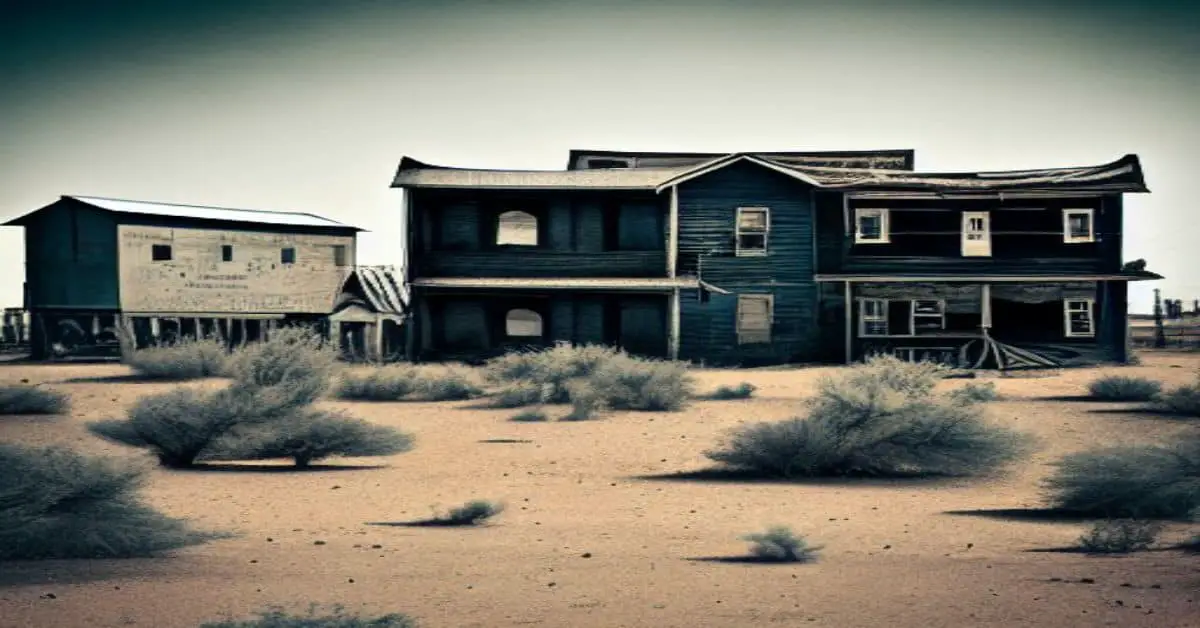Nunn, Colorado was once a thriving town nestled in the heart of the Wild West. Founded in the late 1800s, it boasted a railway station, a post office, and a bustling community of homesteaders. Over time, however, the town’s fortunes declined, and today it is a forgotten ghost town with only a handful of residents and abandoned buildings.
Despite its current state, Nunn still holds onto its rich history and is a fascinating place for those interested in the Wild West era. In this article, we will delve into the history of Nunn, explore its attractions and landmarks, and consider its current state and future prospects.
By doing so, we hope to provide readers with a comprehensive understanding of this forgotten town and its role in shaping the history of Colorado and the American West.
Key Takeaways
- Nunn is a ghost town located 5 miles north of Pierce on highway 85 with an abandoned residential portion, but an active post office and a few residents.
- The history of Nunn includes the original inhabitants of Indians and buffalo, followed by white settlers and homesteaders moving into the area, and the town being named after Tom Nunn who saved a train by flagging it down.
- Nunn has several attractions, including an easy driving distance to the Pawnee National Grasslands and other ghost towns, an old lumber yard, livery stable, and blacksmith shop, an old bank building that is now a private residence, and an old post office and general store.
- Although the main portion of the town is abandoned with many buildings still standing, the new post office is still operating and the postmaster is very helpful to those who come in and chat.
Location and History
Nunn, a Colorado ghost town, is situated 5 miles north of Pierce on highway 85. Indians and buffalo originally inhabited the area before white settlers arrived.
In 1869, the Denver Pacific Railroad built its Cheyenne to Evans, Colorado line and it passed through the area, bringing more settlers to the region. Tom Nunn, who saved a train by flagging it down after discovering a bridge on fire, homesteaded southeast of town near the railroad tracks. The town was named after him, and it eventually grew into a small community with a school and a few businesses.
Today, Nunn is mostly abandoned, but there are still a few residents and an active post office. Many of the town’s buildings, including an old lumber yard, livery stable, blacksmith shop, and bank building, still stand. Tom Nunn’s homestead is also located near the railroad tracks.
Despite its current state of disrepair, Nunn’s history and location make it an interesting destination for those interested in Colorado’s past.
Attractions and Landmarks
The abandoned buildings of Nunn’s old lumber yard, livery stable, and blacksmith shop, as well as the old bank building now serving as a private residence and the old post office and general store, serve as attractions for visitors interested in exploring the area’s historical landmarks. These ruins offer a glimpse into the past and allow visitors to imagine what life was like in the early days of Nunn. The buildings are well-preserved and provide a unique opportunity to explore the town’s history.
In addition to the ruins, Nunn also has local legends that attract visitors. One such legend is the story of Tom Nunn, after whom the town was named. He is said to have saved a train by flagging it down after he discovered a bridge on fire. Visitors can learn more about this legend and others by speaking with locals and exploring the town.
Overall, Nunn’s attractions and landmarks make it a must-visit destination for those interested in history and exploring the past.
Current State and Future Prospects
Currently, the residential portion of the town of Nunn is showing signs of revitalization as it becomes a bedroom community for nearby cities like Greeley and Ft. Collins. With the increase in population, there are now more economic opportunities for businesses to thrive. A post office and a few residents also indicate that the town is not completely abandoned.
Revitalization efforts are being made to preserve the historic buildings in Nunn, such as the old lumber yard, livery stable, and blacksmith shop. These buildings serve as reminders of the town’s rich history and attract tourists who are interested in exploring ghost towns. The old bank building has been converted into a private residence, adding to the town’s unique character.
As Nunn grows, it is important to balance preservation efforts with economic development to ensure the town remains a vibrant and sustainable community.
Frequently Asked Questions
What caused the decline of Nunn’s population and abandonment of its buildings?
Reasons for Nunn’s depopulation include industrialization, the decline of agriculture, and limited economic opportunities. The abandonment of Nunn’s buildings has had a minimal impact on surrounding areas due to its remote location.
Are there any plans to restore or preserve the abandoned buildings in Nunn?
Preservation efforts in Nunn are mainly focused on restoring the old bank building and the livery stable. Community involvement is limited, but some residents want to preserve the town’s history and buildings.
What is the current state of the old school in Nunn and is it accessible to visitors?
The old school in Nunn holds significant historical value, but it is currently in a state of disrepair. There are no plans for restoration, and it is not accessible to visitors due to safety concerns.
Was there any notable event or historical figure associated with the old bank building in Nunn?
The old bank building in Nunn holds historical significance as it was once a vital institution in the town’s past. However, there is no notable event or historical figure associated with it. Its cultural impact is tied to the memories of Nunn’s past residents.
Are there any ghostly or paranormal sightings reported in Nunn, being a ghost town?
As a ghost town, Nunn has not been reported to have any ghostly or paranormal sightings or haunted stories. The town focuses on its history and abandoned buildings, making it a popular destination for history enthusiasts.


